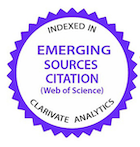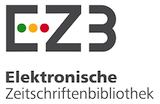Effect of assisted calving on uterine puerperal disorders occurrence, and on reproductive efficiency in crossbred dairy cows
DOI:
https://doi.org/10.1590/1809-6891v24e-75064EAbstract
The aim of this study was to evaluate the effect of the type of calving (normal or assisted) on the occurrence of puerperal uterine disorders and on the number of artificial inseminations (AI) per conception and pregnancy rate at 150 days postpartum (PPD). Cows were observed during parturition and the type of calving was classified as normal or assisted. Normal calving required no human interference, while assisted calving required a calf removal aid via vaginal access. There were 825 births, 7 stillbirths (0.85%) and 17 twins (2.06%). We analyzed 801 single births, from which 766 (95.63%) were normal and 35 (4.36%) assisted. Were evaluated the uterine disorders occurrence such as retained placenta combined with metritis (PR/ME) and clinical endometritis (CE). The overall occurrences were 10.24% (82/801) of RP/ME, 12.86% for CE and 5.12% for RP/ME and CE. Most of normal calving cows had healthy puerperium (73.89%), whereas a majority of assisted calving cows had uterine disorders (74.29%). The number of AI per conception was similar for cows that had either normal or assisted calving (2.39±0.08 and 3.00±0.43, P = 0.16). There was no evidence of negative influence of calving type on the 150 PPD pregnancy rate of lactating crossbreed dairy cows (P = 0.44). Healthy cows had higher 150 PPD pregnancy rate than cows affected by puerperium uterine disorders (51.65 vs. 42.92%). Normal calving crossbred dairy cows had a healthier puerperium, compared to cows with assisted calving which were more susceptible to puerperium uterine disorders. And cows with a health puerperium have a higher pregnancy rate at 150 days postpartum.
Keywords: calve; metritis; puerperium; pregnancy rate.
Downloads
References
Mee JF. Managing the dairy cow at calving time. Vet. Clin. North Am. Food Anim. Pract. 2004;20(3):521-546. https://doi.org/10.1016/j.cvfa.2004.06.001
Schuenemann GM, Nieto I, Bas S, Galvão KN, Workman J. Assessment of calving progress and reference times for obstetric intervention during dystocia in Holstein dairy cows. J. Dairy Sci. 2011;94(11):5494-5501. https://doi.org/10.3168/jds.2011-4436
Kovács L, Kézér FL, Szenci O. Effect of calving process on the outcomes of delivery and postpartum health of dairy cows with unassisted and assisted calvings. J. Dairy Sci. 2016;99(9):7568-7573. https://doi.org/10.3168/jds.2016-11325
Mee JF. Prevalence and risk factors for dystocia in dairy cattle: A review. The Vet. J. 2008;176(1):93-101. https://doi.org/10.1016/j.tvjl.2007.12.032
Bicalho RC, Galvao KN., Cheong SH, Gilbert RO, Warnick LD, Guard CL. Effect of stillbirths on dam survival and reproduction performance in Holstein dairy cows. J. Dairy Sci. 2007;90(6):2797-2803. https://doi.org/10.3168/jds.2006-504
Lombard JE, Garry FB, Tomlinson SM, Garber LP. Impacts of dystocia on health and survival of dairy calves. J. Dairy Sci. 2007;90(4):1751-1760. https://doi.org/10.3168/jds.2006-295
Dematawewa CBM, Berger PJ. Effect of dystocia on yield, fertility, and cow losses and an economic evaluation of dystocia scores for Holsteins. J. Dairy Sci. 1997;80(4):754-761. https://doi.org/10.3168/jds.S0022-0302(97)75995-2
Oltenacu PA, Frick A, Lindhe B. Use of statistical modeling and decision analysis to estimate financial losses due to dystocia and other disease in Swedish cattle. Acta Vet. Scand. Suppl. 1988; 84,353-355 in Proc. 5th Int. Symp. Vet. Epidemiol. Econ., Copenhagen, Denmark.
Sheldon IM, Cronin J, Goetze L, Donofrio G, Schuberth HJ. Defining postpartum uterine disease and the mechanisms of infection and immunity in the female reproductive tract in cattle. Biol. Reprod. 2009;81(6):1025-1032. https://doi.org/10.1095/biolreprod.109.077370
Paisley LG, Mickelsen WD, Anderson PB. Mechanisms and therapy for retained fetal membranes and uterine infections of cows: A review. Theriogenology. 1986;25(3):353-381. https://doi.org/10.1016/0093-691X(86)90045-2
Sheldon IM, Dobson H. Postpartum uterine health in cattle. Animal Reprod. Sci. 2004; 82-83, 295-306. https://doi.org/10.1016/j.anireprosci.2004.04.006
Bell MJ, Roberts DJ. The impact of uterine infection on a dairy cow’s performance. Theriogenology. 2007;68(1):1074-1079. https://doi.org/10.1016/j.theriogenology.2007.08.010
Santos JEP, Bisinotto RS, Ribeiro ES, Lima FS, Greco LF, Staples CR, Thatcher WW. Applying nutrition and physiology to improve reproduction in dairy cattle. Society of Reproduction and Fertility. 2010; London, 67, (supplement), 387-403.
Bicalho, RC, Galvão, KN, Warnick, LD, Guard, CL. Stillbirth parturition reduces milk production in Holstein cows. Preventive veterinary medicine, 2008;84(1-2):112-120. https://doi.org/10.1016/j.prevetmed.2007.11.006
Sheldon IM, Williams EJ, Miller ANA, Nash DM, Herath S. Uterine diseases in cattle after parturition. The Vet. J. 2008;176(1-3):115-121. https://doi.org/10.1016/j.tvjl.2007.12.031
Edmonson AJ, Lean IJ, Weaver LD, Farver T, Webster G. A body condition scoring chart for Holstein dairy cows. J. Dairy Sci. 1989;72(1):68-78. https://doi.org/10.3168/jds.S0022-0302(89)79081-0
McDougall, S, Macaulay, R, Compton, C. Association between endometritis diagnosis using a novel intravaginal device and reproductive performance in dairy cattle. Animal Reproduction Science, 2007; 99(2);9-23. https://doi.org/10.1016/j.anireprosci.2006.03.017.
Gilbert RO, Shin ST, Guard CL, Erb HN, Frajblat M. Incidence of endometritis and effects on reproductive performance of dairy cows. Theriogenology. 2005;64(9):1879-1888. https://doi.org/10.1016/j.theriogenology.2005.04.022
Husnain A, Arshad U, Poindexter MB, Zimpel R, Marinho MN, Perdomo MC, & Santos, JEP. Induced endometritis in early lactation compromises production and reproduction in dairy cows. Journal of Dairy Science. 2023;106(6):4198-4213. https://doi.org/10.3168/jds.2022-22846.
Dobson H, Tebble JE, Smith RF, Ward WR. Is stress really all that important? Theriogenology. 2001;55(1):65-73. https://doi.org/10.1016/s0093-691x(00)00446
Castro-Montoya JM, González F, Mendoza M, Harper K, Corea EE. Interrelationship between diseases and calving season and their impact on reproductive parameters and milk production of tropical dairy cows. Tropical Animal Health Production. 2022; 54:158. https://doi.org/10.1007/s11250-022-03151-5
Rezende EV, Campos CC, Santos RM. Incidência da retenção de placenta e as consequências na produção de leite e na eficiência reprodutiva de vacas holandesas. Acta Sci. Vet. 2013;41(1):1-6.
Buso RR., Campos CC, Santos TR, Saut JPE., Santos RM. Retained placenta and subclinical endometritis: prevalence and correlation with the reproductive performance of crossbred dairy cows. Pesquisa Veterinária Brasileira. 2018;38(1):1-5. http://dx.doi.org/10.1590/1678-5150-pvb-4707
Nobre MM, Coelho SG, Haddad JPA, Campos EF, Lana AMQ, Reis RB, Saturnino HM. Avaliação da incidência e fatores de risco da retenção de placenta em vacas mestiças leiteiras. Arquivo Brasileiro de Medicina Veterinária e Zootecnia. 2012;64(1):101-107. https://doi.org/10.1590/S0102-09352012000100015
Fourichon, C, Seegers, H, & Malher, X. Effect of disease on reproduction in the dairy cow: a meta-analysis. Theriogenology. 2000;53(9):1729-1759. https://doi.org/10.1016/S0093-691X(00)00311-3
Bergamaschi, MACM, Machado, R, Barbosa, RT. Eficiência reprodutiva das vacas leiteiras. Juiz de Fora, MG: Embrapa Gado de leite, 2010. 12p. (Embrapa Gado de Leite. Circular Técnica 64).
Published
How to Cite
Issue
Section
License
Copyright (c) 2023 Brazilian Animal Science/ Ciência Animal Brasileira

This work is licensed under a Creative Commons Attribution 4.0 International License.
Authors who publish with this journal agree to the following terms:
- Authors retain copyright and grant the journal right of first publication with the work simultaneously licensed under a Creative Commons Attribution License that allows others to share the work with an acknowledgement of the work's authorship and initial publication in this journal.
- Authors are able to enter into separate, additional contractual arrangements for the non-exclusive distribution of the journal's published version of the work (e.g., post it to an institutional repository or publish it in a book), with an acknowledgement of its initial publication in this journal.
- Authors are permitted and encouraged to post their work online (e.g. in institutional repositories or on their website) prior to and during the submission process, as it can lead to productive exchanges, as well as earlier and greater citation of published work (See The Effect of Open Access).































